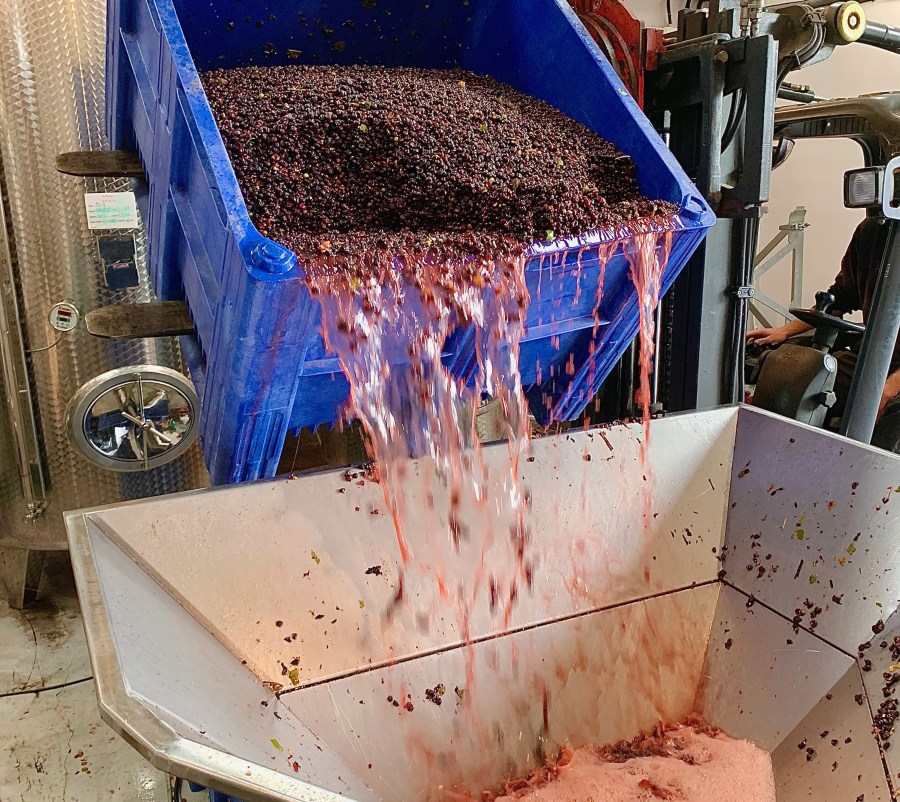Machine harvesting is becoming more popular in our young wine country; however, scepticism is still frequent. This article is designed to be a follow up to and expand on the article published in the February 2023 edition of Vineyard which dealt with machine harvesting and its influence on the quality for still and sparkling wines, what changes in winemaking and three different approaches. To avoid repetitions, if you missed this article, you’re very welcome to ask me a copy or it is available at
www.vineyardmagazine.co.uk.
In short, machine harvesting can produce high quality wines both still and sparkling as long as the right criteria and equipment are applied.
Quality management starts with machinery
The management largely depends on which wine we intend to produce, how we manage the pressing and the following winemaking steps. Many UK wineries don’t have a good and efficient set up for machine picked grapes; in most cases, they are trying to adapt the equipment they have which is understandable. This also means that newly born wineries now have the opportunity to start off on the right foot and get ready with less effort. Efficiency, impacts quality as well as cost.
Low efficiency can be due to a number of factors including but not limited to: lack of space, small or not suitable machines, extended waiting time for the grapes before pressing and lastly, the inability to process a large amount of fruit in the same day.
As a winemaking consultant, I’ve often found myself in wineries where the machinery choice wasn’t made by an experienced winemaker, often by the owners who received advice from the suppliers which can be knowledgeable in their area, but certainly don’t make wine and don’t have a direct contact with the daily challenges relating to many aspects of winemaking.
Pressing logistics
Assuming that most wineries cannot process grapes as fast as the machine pick them; I find the picking logistics and the grape pressing sequence the most important factor when harvesting mechanically.
By choosing the right sequence you manage the skin contact time: phenolic, acidity precursors extraction as well as oxidative reactions. It’s the winemaker’s choice to increase or the decrease the skin contact time, and with machine harvesting this can be done more efficiently than using hand picking.
Machine picked grapes largely arrive to the winery as whole berries; this opens up a “new pressing opportunity” without using a destemmer. The results from whole berry pressing are in between the whole bunch and the crushed fruit pressing with advantages in terms of time/cost and space, including the possibility to separate the free run juice generated by the machine. This juice might not look or taste so good but it’s actually a good base to keep on a cuvée…
If whole berry pressing is not what we’re looking for, then crushing is the most cost and quality efficient way in most cases especially in our cold climate. By crushing, filling the press and draining, we can load about three times more grapes than we could manage to fit as whole bunches.
The long traditional pressing programmes which can take between three and six hours become unnecessary or actually unsuitable for machine picked grapes and we can use fast programmes which take 1.5 to 2.5 hours based on grapes and the technique that we wish to apply while achieving better quality wines.
I’m obviously not against whole bunch pressing and I think we still need to do some of it, I’m just comparing the methods.
I’ve already touched on this subject last February 2023 and I’m not going to talk about the juice management and how machine harvested grapes can produce high quality sparkling wines. What’s certain, the winery work changes according to the picking method and the target.
Total acidity and precursors management
Often, we still have to deal with high total acidity in our grapes; this is the main reason why we add sugar at disgorging.
However, it is possible to improve the acidity control by managing the skins differently and then we would be able to release more low or zero sugar added wines and deliver better quality.
Another important benefit is that we can extract and actually transfer aromatic precursors from a juice batch to another according to our pressing sequence and squeezing the suitable skins more than once to also achieve better yields.
As usual, everything needs to be put in the right context and for the right purpose.




